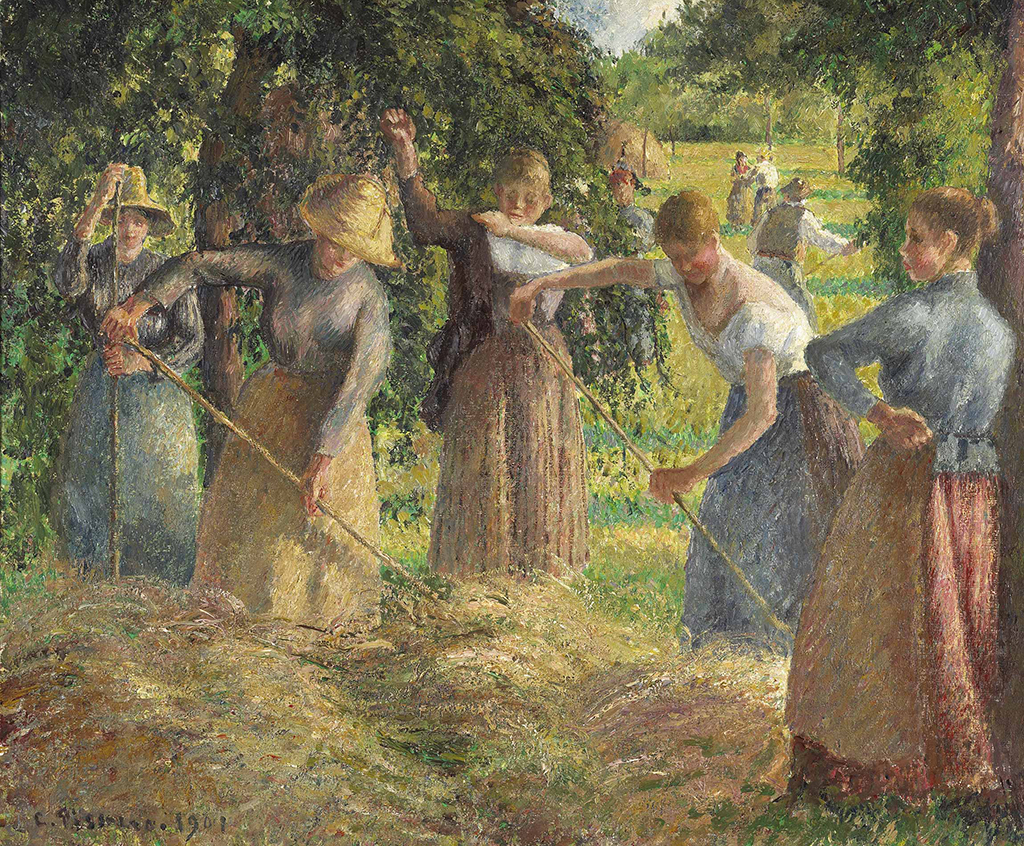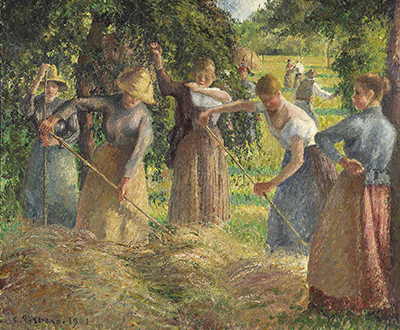The Hay Harvest at Éragny is an oil on canvas painting. The painting shows women working on the harvest in the French community of Éragny on the River Epte. It measures nearly 54 cm x 65 cm. Camille Pissarro's signature is in the bottom left corner of the painting. The picture is part of the collection in the National Gallery of Canada.
In the year's leading up to his death, the Danish-French artist, Camille Pissarro lived in the French village of Eragny. The village was the theme for a number of his works involving rural life. Two years before his death in 1903 he painted the artwork known as Hay Harvest at Éragny.
Hay Harvest at Éragny
While living in Éragny, Pissarro painted scenes of landscapes as well as everyday tasks performed by the rural community. The agricultural workers in his paintings appear as a natural part of the landscape. This is evident from his 1897 painting titled, The Harvest of Hay in Éragny. All of this changed when he painted Hay Harvest at Éragny in 1901. Rather than being a landscape, the focus of the painting moved to it being one where the women farm workers were the subject, similar to Van Gogh's The Potato Eaters.
Looking at the painting, Pissarro has made the fields visible in only a small part of the background. He does this by using trees to hide part of the view. The result is that the focus is on the five women farm workers standing in front of the trees. Two of the women are working the hay while the others appear engaged in conversation. Pissarro’s positioning of the women provides a sense of rhythm and continuity across the painting’s foreground.
Rural Work
Pissarro was a painter with strong political beliefs. He preferred country life rather than the city as it lined up with his views on human equality. Living amongst the rural workers, Pissarro had great respect for them. He saw similarities between the physical labours of his art and the physical work done in the fields. A number of his works while living in Éragny reflect his interest in the pride that came from such labour.
Pissarro's Style and Influence
During his career, Pissarro's style and method of painting evolved and changed. He was a recognised impressionist and neo-impressionist painter. Despite this, he was a painter who was always learning from the work of others. At the same time as he was learning from others, he was also a mentor to other artists. Living in the countryside, he would receive younger artists who were keen to learn from him. He collaborated with artists like Cézanne and other impressionist painters. Throughout his long career, he was an influence on both the impressionist and post-impressionist movement.





